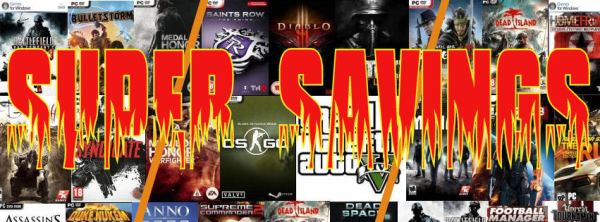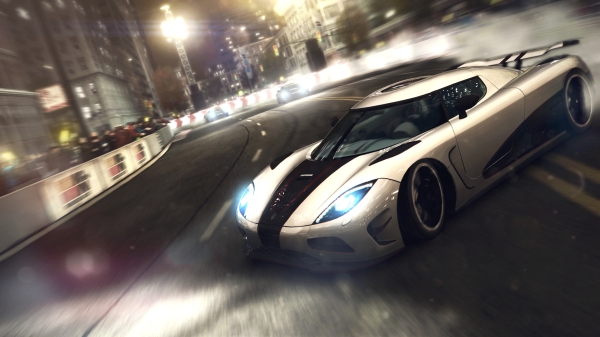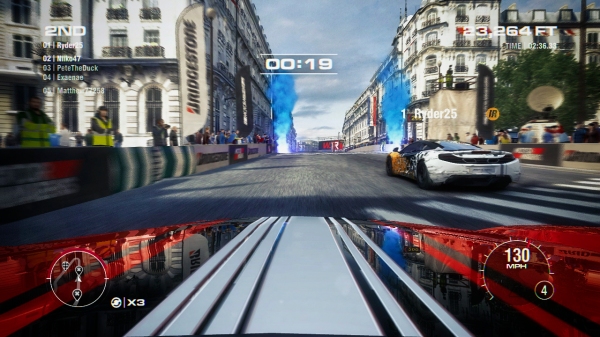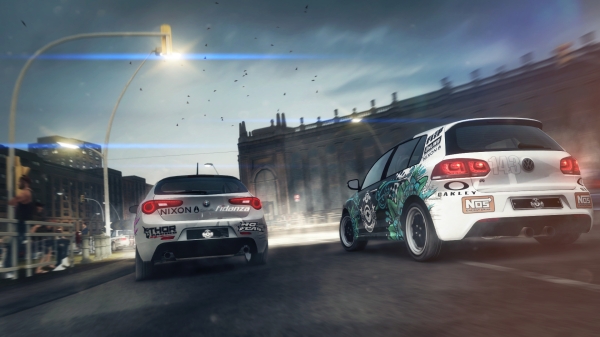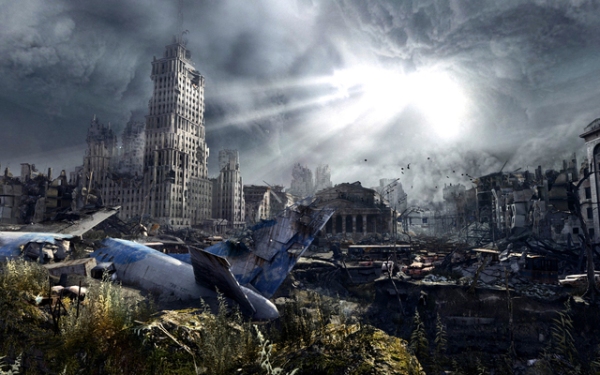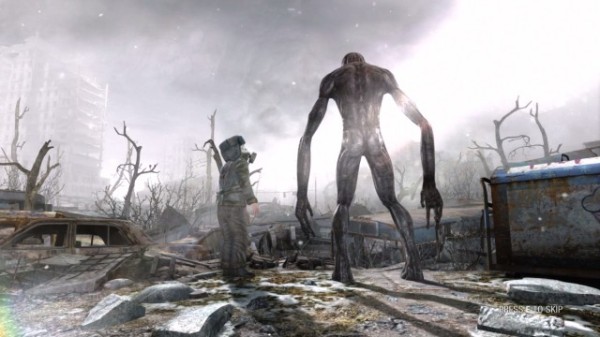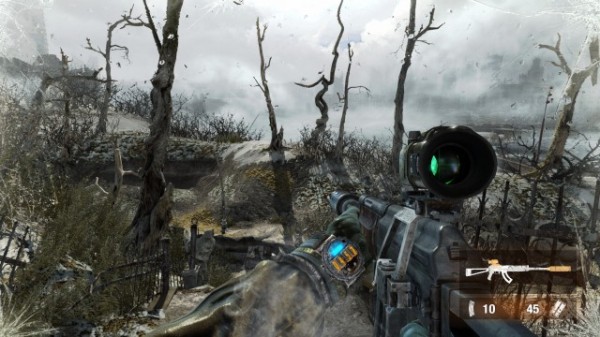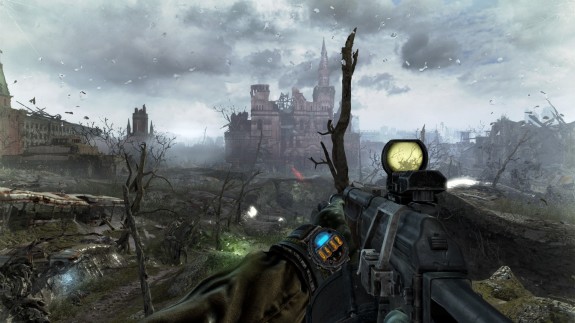Visit our SUPER SAVINGS. Cool games at attractive prices. Borderlands 2, COB Black Ops 2, Dark Souls, Crysis, XCOM & many other…
All posts for the month May, 2013
SUPER SAVINGS
Posted by buygamecode on May 30, 2013
https://buygamecode.wordpress.com/2013/05/30/super-savings/
Help Desk
Our Help Desk intended to provide the customer with information and support related to a company’s products and services.
The purpose of a help desk is usually provide guidance about products and solve various questions.
Find it in “My Account”, click the button “Help Desk”, login via Facebook or Twitter or register there.
It is the easiest way for users to get answers to questions, obtain the necessary information and solve known problems.
Posted by buygamecode on May 30, 2013
https://buygamecode.wordpress.com/2013/05/30/help-desk/
Grid 2
 Part of a long string of blockbuster racing games (including TOCA Championship Racing, Pro Race Driver and the original Grid), Grid 2 challenges players to be fast, be first and be famous as they enter a stunning new world of competitive motorsport. Following the success of Race Driver: Grid — which set new standards for damage, AI, visuals and introduced the Flashback time rewind feature (now adopted by many racing games) — Grid 2 will again raise the gameplay and technological bar for motorsport gaming and remain true to the series’ core value — it’s all about the race. Grid 2 will also introduce the new TrueFeel Handling System, which uses real physics to hit a sweet spot between accessibility and simulation to deliver handling that is approachable yet challenging to master.
Part of a long string of blockbuster racing games (including TOCA Championship Racing, Pro Race Driver and the original Grid), Grid 2 challenges players to be fast, be first and be famous as they enter a stunning new world of competitive motorsport. Following the success of Race Driver: Grid — which set new standards for damage, AI, visuals and introduced the Flashback time rewind feature (now adopted by many racing games) — Grid 2 will again raise the gameplay and technological bar for motorsport gaming and remain true to the series’ core value — it’s all about the race. Grid 2 will also introduce the new TrueFeel Handling System, which uses real physics to hit a sweet spot between accessibility and simulation to deliver handling that is approachable yet challenging to master.
Going behind the wheel of a handpicked selection of automotive icons spanning four decades and three continents — USA, Europe and Asia — players will race their way to the top of Grid 2’s new, evolving world of motorsport. From Paris to Dubai, Miami to the sun-kissed California coast and beyond, beautifully created city streets, licensed circuits and edge-of-control mountain roads will become home to the most visceral and exhilarating races in games. Grid 2 also sets new standards for a racing multiplayer experience with an entirely distinct and extensive gameplay component and unique progression system. Deep customization options and integration with RaceNet will offer further immersion and connectivity to extend each player’s GRID 2 experience.
Development
The game was officially announced in 2012 and a teaser video was shown. The game contains a lot of improvements and runs on a modified engine. The game is said to be pushing boundaries.
 “In single-player, split-screen and online, the next-generation of the EGO Game Technology Platform will power graphics, AI, handling and damage advancements that will immerse players in the racing experience like never before. Like its predecessor, GRID 2 will put the sheer thrill and adrenaline rush of the race at the heart of the experience. It’s what we call Total Race Day Immersion,” said Clive Moody, Executive Producer.
“In single-player, split-screen and online, the next-generation of the EGO Game Technology Platform will power graphics, AI, handling and damage advancements that will immerse players in the racing experience like never before. Like its predecessor, GRID 2 will put the sheer thrill and adrenaline rush of the race at the heart of the experience. It’s what we call Total Race Day Immersion,” said Clive Moody, Executive Producer.
“The core design philosophy for GRID 2 is that we treat the race as a character, not a consequence of simply putting cars on tracks. Everything that goes into the game impacts on that second-to-second, in the moment, blockbuster drama – the feel and personality of the race.”
The cockpit view was also removed. The reasons for removing the it are as follows.
“The thing is that [removal of the cockpit view] was a really big decision for us. It allows us to be able to push other things in the game, like with the visuals. We’ve been able to extend point-to-point events, we’ve been able to add more cars to the track, and that’s really pushing things forward. It’s a good decision for the game and we don’t regret it.”
Gameplay
The game is an out and out racing game at its core and features top cars that have been meticulously designed.
The main USP of the game are its visuals and the physics are fantastic as well. It doesn’t feature a cockpit view but the third person camera should be enhanced.
The game also contains a lot of American locations like Chicago, the Indianapolis Motor Speedway and the California Coast. There are also face off events between two players.
GRID 2 will have around 70 cars.
Improvements
The game was said to be in pre-production for two years. It runs on the EGO Game Technology Platform of Codemasters.
The AI, visuals have all been improved and the game is said to raise the technological bar for motorsport gaming.
There’s also a career mode that is said to be improved a lot. It is built on the same handling model as the first game and has a new TrueFeel Handling System which uses real physics to find a sweetspot between accessibly and simulation.
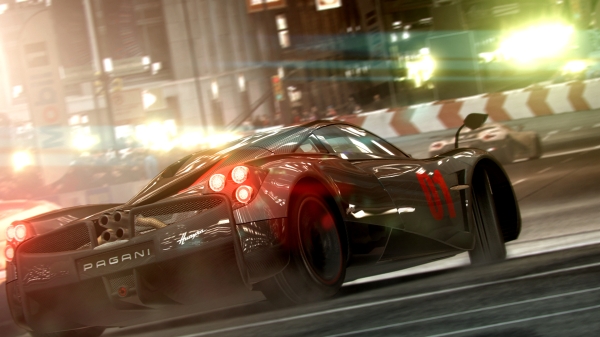
Overall though, Grid 2 will be a success if it can show that it has enough depth to keep players interested. The involving-looking career mode adds a nice fantasy element to the proceedings, while there seems to have been enough work that’s gone into the physics of the cars and tracks to make real car geeks and race fans take a second look.
The question of how long we’ll have to wait to find out has been answered, incidentally. The game arrives on May 28th in NA and May 31st in Europe. It will debut on current generation hardware and PC, but don’t be at all surprised if a deluxe version bundled with DLC makes an appearance around the launch of the new consoles. (From ign.com, gamingbolt.com)
Buy Grid 2 PC | Steam CD Keys
Posted by buygamecode on May 28, 2013
https://buygamecode.wordpress.com/2013/05/28/grid-2/
Metro: Last Light review
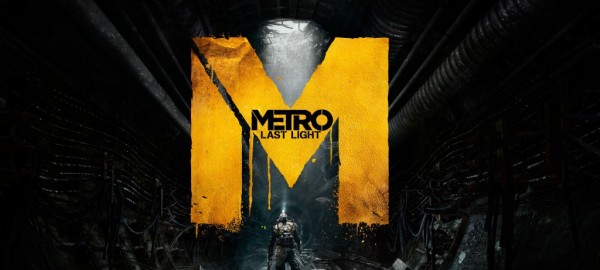 I was running out of time and ammo. Mutated wolves, freakish crustaceans, and a flying demon were relentlessly hunting me through the swampland. According to my watch, I only had 15 seconds left of breathable air in the gas mask. I had two choices: either let the wildlife eviscerate me from head to toe or suffocate to death from the surface’s radioactive atmosphere.
I was running out of time and ammo. Mutated wolves, freakish crustaceans, and a flying demon were relentlessly hunting me through the swampland. According to my watch, I only had 15 seconds left of breathable air in the gas mask. I had two choices: either let the wildlife eviscerate me from head to toe or suffocate to death from the surface’s radioactive atmosphere.
Welcome to the harsh world of Metro: Last Light.
Developer 4A Games returns to post-apocalyptic Moscow in this sequel to Metro 2033 (out May 14 for the Xbox 360, PlayStation 3, and PC). The studio based its first-person shooter series on the Metro books written by author Dmitry Glukhovsky. Just a few months ago, the future of Metro: Last Light was uncertain when original publisher THQ closed down due to bankruptcy, but Deep Silver (publisher of the zombie-slaying Dead Island games) picked up the publishing rights for $5.8 million during the THQ auction a few weeks later.
The interruption doesn’t seem to have affected Metro: Last Light in any meaningful way. 4A Games crafted a rich, beautiful world fraught with danger, political conspiracies, and supernatural forces.
Twenty years after nuclear missiles scorched the planet (an event stemming from World War III), Moscow is a wasteland. All sorts of monstrosities have risen from the ashes and claimed the Russian city as their turf while other creatures chose to go underground where the remaining survivors try to live a normal life. Death looms at almost every corner.
This is clear when you first step foot on the surface. Between the pockets of intense radiation and the wildlife that slithers, swims, flies, or runs across the landscape, I was always nervous when Last Light took me back above ground. Part of that anxiety comes from a sort of tactile connection that develops during the non-shooting portions of gameplay: the act (and squeaking sound) of wiping your gas mask to remove any blood or goo obscuring your vision, repeatedly charging your electrical equipment by rapidly clicking the mouse, or flicking on your lighter in places where your flashlight just doesn’t work.
You play once again as Artyom: a young man who still remembers what it was like before the fires destroyed our world, but who is now very much a native of the Metro. He possesses a unique ability. Most people experience convulsions, pain, hallucinations, and even madness in the presence of a Dark One, Artyom alone is immune. Metro-dwelling survivors see the Dark Ones as monsters that must be destroyed, but there’s a deeper truth here. Artyom’s immunity is crucial to the story in both games, but the payoff and explanation for why was saved for Last Light.
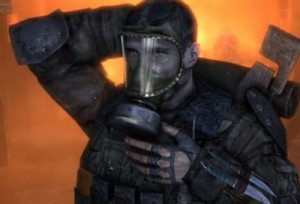 As the elite Ranger known as Artyom, you’re not some avatar in a virtual shooting gallery. You’re an active participant, a citizen of the Metro. A survivor. And once you feel like you’re actually a part of the fiction, the threats amplify tenfold. The hostility isn’t limited to the world of the living, either. Remnants of the dead — those who died from the blasts — appear in the form of ghostly apparitions and disembodied voices whispering to you in the darkness. Last Light isn’t a pure survival-horror game, but the creepy elements it uses are enough to make you paranoid. (venturebeat.com)
As the elite Ranger known as Artyom, you’re not some avatar in a virtual shooting gallery. You’re an active participant, a citizen of the Metro. A survivor. And once you feel like you’re actually a part of the fiction, the threats amplify tenfold. The hostility isn’t limited to the world of the living, either. Remnants of the dead — those who died from the blasts — appear in the form of ghostly apparitions and disembodied voices whispering to you in the darkness. Last Light isn’t a pure survival-horror game, but the creepy elements it uses are enough to make you paranoid. (venturebeat.com)
In Metro: Last Light, a sole Dark One survivor—a child—is discovered. Artyom is ordered to find it and kill it.
But contrary to their ominous name, the Dark Ones are not so very dark at all—and in fact are a peaceful, intelligent race of mutants that simply wanted to make contact with humans. Artyom shares a special connection with them, and has begun to question and regret his actions in the first game that lead to their destruction.
But even though the Dark One is an important plot point, the larger plot concerns a summit of underground factions meeting to discuss peace—and a sinister plan to ensure it all ends in a bloody war and only one faction is left standing strong.
The people
The tension can feel overwhelming at times, so a series of Metro stations that people have transformed into towns serve as much-needed breaks. They’re more than just trading posts, however. You feel as if real people have lived in these places for years. You learn this from the numerous conversations happening all around you. Some folks are refugees escaping the tyrannical rule of the Nazis or the Communists (at the end of the world, it seems divergent political ideologies are stronger than ever). Others are humble merchants who will gladly take your pristine pre-apocalypse bullets — Metro’s form of currency, which you can also use as ammo — in exchange for their wares. And some are just thieves, looking to scam the next poor bastard who walks their way.
Running out of gas
Like Metro 2033, the poisoned, desolate apocalyptic Earth can and will kill you in a variety of horrible ways. If a mutant doesn’t eat your face, lingering radiation will melt it off. Or the deadly air will burn up your lungs and you’ll die gasping for breath, your last thoughts of those you have failed but possibly embracing the exit from such a bleak, miserable, and seemingly hopeless world.
 Staying alive means breathing, and that means you must wear a gas mask any time you’re outside the Metro (which is most of the game). I like that you have to occasionally wipe off your gas mask (press G on the keyboard) to improve visibility–for example, wiping the blood or muck off of it. You’ll also need to replace it periodically after it becomes cracked or damaged.
Staying alive means breathing, and that means you must wear a gas mask any time you’re outside the Metro (which is most of the game). I like that you have to occasionally wipe off your gas mask (press G on the keyboard) to improve visibility–for example, wiping the blood or muck off of it. You’ll also need to replace it periodically after it becomes cracked or damaged.
More importantly, you must also maintain a steady supply of air filters for your mask to keep yourself breathing. The air filters are effectively a “death timer” that is constantly ticking down. When a filter runs out, you have about 20-30 (real) seconds to replace it before Artyom asphyxiates and you have to restore from the last checkpoint.
The gas mask filter system has also become simpler to understand. Each filter you pick up gives you five minutes of mask time. Upon donning your mask, Artyom will start a five minute timer on his digital watch. This counts down the time to when your filter becomes ineffective. Changing your filter restarts the five minute timer. Instead of having a number of filters in your inventory and each use consuming one, picking up a filter will add to the total time you can use your mask for. You can check this total time by opening your weapon menu. It means that you always know how long you can stay on the surface for, and how long you have until you must change your filter. Clarity without sacrificing complexity. (onlysp.com)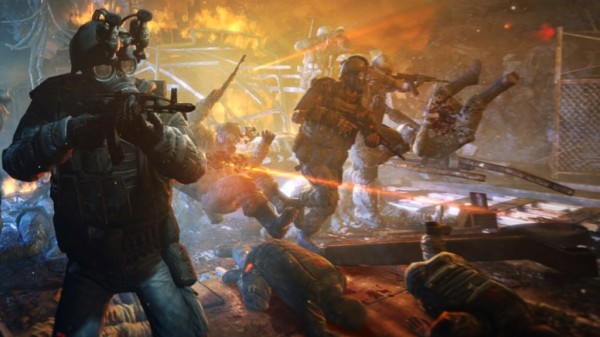
Stealth and Combat
Combat has received a few small tweaks. Artyom feels stronger and faster – as well he should, considering his admittance into and training with the Spartan Rangers. Hit indicators create a great sense of visual feedback, allowing you to see and hear roughly how much damage you are doing, or whether you are shooting at armour or flesh. There some new types of mutants, but beasts are much rarer in the metro tunnels. The abundance of Nosalises gives way to new dominant mutant types. Underground has skittering arachnids – both spiders and scorpions – that have heavily armoured carapaces, but are vulnerable to bright light. Eliminating them hinges on a charged up headlamp to expose their soft underbellies and then a swift bullet or stab for the despatch. Above ground, the swampy areas are populated by the Shrimps – again, heavily armoured on top but with soft bellies. The small amphibious Shrimp bite or, at a distance, spit acid that hurts and dirties your gas mask. Larger, stronger beasts will also emerge from the tainted waters, sporting two swiping forearms that can pack a punch from a decent range. Fighting these armoured mutants requires different tactics compared to the more familiar Nosalises and Watchers, which spices up combat a bit, although fighting waves of the same mutants over and over does get slightly repetitive.
New to the mix are boss battles. A few times during the game, Artyom will find himself encountering larger, stronger, unique mutants in small arenas. The bosses are not particularly inventive or complicated to fight – most boss battles essentially boiling down to shoot it until it dies while dodging their attacks. They also tend to be bullet sponges, soaking up plenty of valuable resources. The boss battles are not spectacularly bad, but they’re not a high point either.
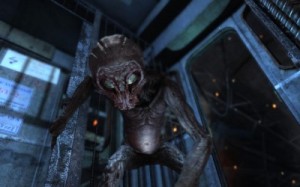 The various mutants in the game aren’t distinctly named, at least not within the context of the game—but all of them require very different tactics to deal with (and a lot of cardio). For example:
The various mutants in the game aren’t distinctly named, at least not within the context of the game—but all of them require very different tactics to deal with (and a lot of cardio). For example:
- Giant spider/scorpion creatures live in dark tunnels and are all but bullet proof, but they are damaged by your flashlight.
- Wolf-like mutants are very fast, tough, and attack in large groups. You can’t outrun them, and if they swarm you you’re as good as dead.
- Demons (large bat-winged creatures) dive from above and can even pick you up and drop you.
- Swamp-dwelling, highly armored crab-like mutants that are impervious to your bullets and only vulnerable when they open their mouths. Hopefully you aren’t already being eaten when you see it happen.
 Underground, Artyom is more likely to encounter enemies of the human variety, and this is where the meat of the combat takes place. The Reds and the Nazis are mobilising, occupying more territory and planning final pushes. Fighting humans is a precarious and risky business, with their guns and grenades doing plenty of damage to Artyom. A frontal assault against an entrenched army is possible, but not ideal from a survival or resource standpoint. Instead, almost all fights can be approached stealthily, allowing Artyom to ghost his way through several stations and outposts.
Underground, Artyom is more likely to encounter enemies of the human variety, and this is where the meat of the combat takes place. The Reds and the Nazis are mobilising, occupying more territory and planning final pushes. Fighting humans is a precarious and risky business, with their guns and grenades doing plenty of damage to Artyom. A frontal assault against an entrenched army is possible, but not ideal from a survival or resource standpoint. Instead, almost all fights can be approached stealthily, allowing Artyom to ghost his way through several stations and outposts.
There’s plenty of action to be had in Last Light, though its gameplay isn’t as strong as its presentation. This isn’t a guns-blazing shooter; at least, it’s not meant to be. It’s a stealth-first game that changes between bouts of forced action and slow-paced, methodical sequences that dare you to keep quiet and stay out of sight. Little things, like crouching while walking and unscrewing light bulbs or extinguishing oil lamps can leave your foes at a disadvantage and give you the edge, though Last Light’s predictable and easy-to-manipulate enemy AI removes much of the drama if you want to play with a stealth slant.
Indeed, getting through most stealth sequences requires stunningly little thought, and only late in the campaign are you in any real danger of running into trouble. Simply outmaneuvering, flanking, and backstabbing — or knocking unconscious — adversaries is the name of the game, though there doesn’t seem to be much of a point in letting anyone live by merely clocking them in the skull. When they are grouped together and talking, you usually have to wait for them to stop and walk away. If they don’t, then there’s almost assuredly a way around them. Of course, if you’re dying for some action, you could always just start shooting. Just be prepared to reap the whirlwind; if an enemy alerts his comrades, heavily-armored backup will scour the area looking for you, and you’ll need to use all of the firepower you have to survive, supplemented by the ammo, firearms and other goods your foes constantly drop once felled.
On the other hand, with Last Light’s litany of mutated creatures, stealth gameplay won’t work. The guns-blazing approach is a requirement, and it’s in these action-oriented engagements that the adventure begins to lose a little of its luster. The interplay between being underground in dank tunnels and caverns and on the surface in hazy, debris-strewn sunlight is admittedly brilliant – post-blast Moscow is stunningly detailed and a highlight of Last Light — but fighting the abominations that stalk the desolate cityscape leaves something to be desired. These frays run the gamut from acceptable to obnoxious, and there are a few instances that vividly illustrate that while human enemy AI is weak, creature AI is too aggressive. This could be lazily explained away by the game’s lore, but Last Light tends to create the wrong kind of scares during fights with abominations in particular, the fright that comes from knowing that the odds are against you due to unbalanced, frenzied AI.
The weapon
The weapon system has received a slight adaptation. Instead of dedicated pistol, primary, and secondary slots for weapons, Artyom can now carry any three weapons he wishes. He can also carry four types of throwables – grenades, incendiary grenades, claymore mines, or throwing knives – of which one at a time can be equipped to a throw key. There is also a dedicated melee key, which is used for melee attacks or takedowns, instead of equipping the trench knife as a weapon. Weapons are controlled through the new weapon menu. Pressing Tab brings up the weapon menu, slowing time considerably and displaying plenty of useful information. Along the top, you’ll see how much of each type of ammunition you have. Down the bottom you can see your medkits and how much gas mask time you have available. You can also view your weapon and their attachments, and select which gun or throwable you have equipped. This screen also allows you to choose between dirty rounds or military grade ammo for your rifles. It’s not the cleanest UI I’ve ever seen, but it’s sufficiently functional once you get used to it.
An extension of the original weapon system to include a mechanism for attaching modifications to your guns is incredibly welcome. Gone is the pot-luck fixed attachment system of 2033. Instead, attachments can be added or removed at a weapons dealer – for a price, of course. That means I can have my revolver with a 2x scope, silencer, stock, and laser sight for mid-range stealth sniping, as well as my extended barrel reflex sight shotgun for pesky Nosalis encounters.
Last Light also does a great job of integrating ideas from the more RPG-flavoured titles in the STALKER series. Even the most simple bullet holds real value, and without filters for your gas mask you won’t last long above the surface or, in some cases, down below. There are only a few basic gun types, but these can be customised to create sniper weapons, stealth weapons and overpowered shotguns, and the numbers of enemies and the relative scarcity of ammunition makes you think carefully about the weapons you carry, and ensuring you have the right tool for any given situation. Different weapons have a tangible impact on the way you play. Equip a pistol with a night-scope and a suppressor, and you have the perfect tool for mid-range stealth kills. Equip a quad-barreled shotgun, and you’d better strike quickly and strike hard.
Gameplay-wise, Last Light is definitely a more streamlined experience. “Streamlined” is not a pejorative, either – the core mechanics are very much intact. The developers have obviously put time into examining some of the more obtuse mechanics of 2033 and worked hard to polish their implementation. For example, when looting a body, there is a single pick up command that will loot said body of all their items – gone are the days of tapping half a dozen times to grab every skerrick of wayward ammo, or missing out on valuable shells because the body fell forwards and was rendered unlootable. One button, one press, every bullet.
Your methods of illuminating the environment have adapted. Artyom still carries his trusty headlamp and pneumatic charger, with a tiny difference – if your torch is fully charged Artyom will refuse to use the charger, and if you are charging, he will stop when it reaches full charge. It’s a nice touch that prevents unnecessary or excessive charging. Artyom can also equip his lighter by tapping the journal button. The lighter is a valuable tool, able to burn the abundant spider webs that slow you down. It also doubles as a minor light source when you are without your headlamp or night vision goggles.
Overall
Metro 2033 deservedly earned a reputation as a visual benchmark – the next Crysis for GPU enthusiasts. Running on its predecessor’s 4A Engine, Metro Last Light looks better than ever. Every location’s grime and detritus is beautifully recreated on the screen, with scars and gauges in walls given depth by copious tessellation. Stunning lighting effects halo around lanterns, fires flicker shadows across walls, and bright coronas appear on your gas mask’s glass. The world looks best through the filter of a gas mask – fingerprints on the glass, spider cracks around the outside, droplets of condensation, smears of blood and mud, the fog of stale air behind a used filter – it all looks utterly gorgeous. It’s still impossible to change individual advanced graphics settings on and off in the menu, which is disappointing, but the presets are functional enough. You’ll need a beefy system to get the most out of the visuals, but the game still looks stellar on lower settings. Performance does not vary too much, however you will take a framerate hit in the people-thick Metro stations.
As is expected, sound design is wonderful. Gunshots echo hollowly through the hard tunnels, with bullets impacting on concrete with a sufficiently dull thump, or pinging off a metal door or plate of armour. Guns sound rough and home-made, with the dirty bullets producing a suitably weak pop to military grade ammunition’s full-bodied snap. Monsters growl in the distance, menacing from the shadows, querying your safety. Metro stations themselves are full of crowded chatter, and the noises of those fighting for existence. The auditory clutter does an impeccable job of communicating the chaotic lives of those in the metro stations. Above ground is a whole new experience, with a much more organic, vibrant, living ambience greeting your ears. Where Metro 2033’s above ground Moscow was a desolate and quiet place, in Last Light new life has come to Moscow, and you can hear it all around.
Metro 2033 was an atmospheric gem, one that immersed players in a fully realised world and gave them a complex story with real characters. Metro Last Light is a refinement of the formula, delivering the same calibre of atmosphere and storytelling while improving upon many of the under-explained mechanics. It may have lost a smidgen of its difficulty to accessibility on normal, but that doesn’t detract from the overall quality experience 4A deliver with Metro: Last Light.
Metro: Last Light looks stunning. If you have the means to, you should definitely play this on a PC. Even my ancient machine, which is slightly above the minimum requirements, was able to run one of the most visually striking games I’ve ever seen. The developers sculpted a gorgeous painting out of the charred and broken buildings, bridges, and streets of post-fallout Moscow. The same is true for the labyrinthine tunnels and city states of the Metro system where gas lamps illuminate the dank walls and filthy homes of its tenants in gritty detail. (venturebeat.com)
2013 is shaping up to be a great year for games. We have already had some incredible experiences this year like: Tomb Raider, BioShock: Infinite, and Far Cry 3: Blood Dragon. You can now addMetro: Last Light to that list. I’m so happy that 4A games found a home at Deep Silver, and were able to get this game released.
Metro: Last Light improves on its predecessor in almost every way. The story is better, the A.I is actually competent, and all of the gameplay mechanics are much better handled though a more intuitive user interface. Last Light is a fantastic game, and one you should definitely check out. (pixelenemy.com)
 If you pre-order the game, you’ll get the “Limited Edition” that includes the Ranger Mode (as well as 100 military-grade bullets). If you buy it afterward launch, or buy it used, you will need to pay $5 for the Ranger Mode. Sure, $5 isn’t a huge amount, but those who don’t bother to pre-pay are effectively expected to pay more for a mode that should be in the game to begin with. BioShock Infinite didn’t block its similar 1999 mode. Why is Ranger Mode any different?
If you pre-order the game, you’ll get the “Limited Edition” that includes the Ranger Mode (as well as 100 military-grade bullets). If you buy it afterward launch, or buy it used, you will need to pay $5 for the Ranger Mode. Sure, $5 isn’t a huge amount, but those who don’t bother to pre-pay are effectively expected to pay more for a mode that should be in the game to begin with. BioShock Infinite didn’t block its similar 1999 mode. Why is Ranger Mode any different?
Putting that aside, arguably the best way to approach Last Light is to play through it the first time as a standard shooter, then play through Ranger Mode utilizing stealth. If you can stomach the idea of spending more without a pre-order, that is.
Ranger Mode is a different way to play, and it changes the dynamic. You have less ammo, and you must rely on visual identifiers on the gun itself to know how much ammo is left in a clip. Enemies also do more damage, there’s no HUD, and the world is generally more vicious. The mode forces you to think through your scenarios and take more of a measured approach. This creates more tension and, in turn, leads to a better game in some ways. (Source venturebeat.com, digitaltrends.com, onlysp.com, trustedreviews.com, ign.com, pixelenemy.com)
Posted by buygamecode on May 17, 2013
https://buygamecode.wordpress.com/2013/05/17/metro-last-light-review/

